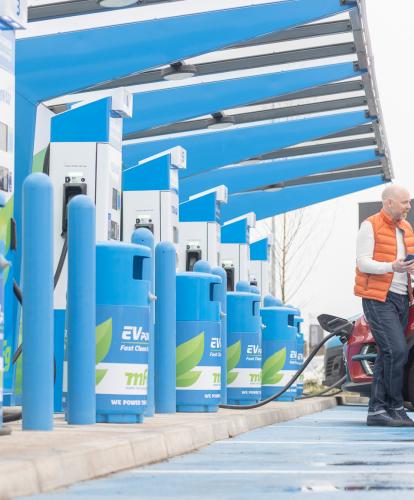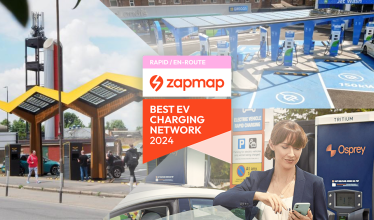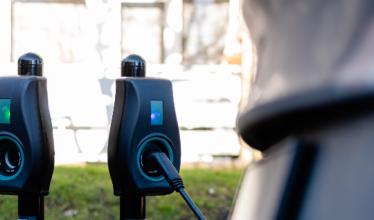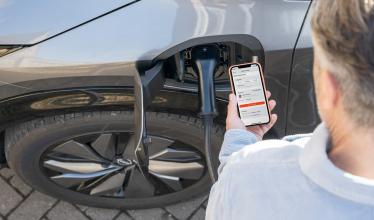En-route charging infrastructure is a fast-growing area of the UK’s public charging network. It's designed for electric car drivers looking to recharge their vehicle as quickly as possible on longer journeys.
Usually located near motorways and major roads, you can often find en-route charge points at existing motorway service stations. However, you will increasingly find dedicated charging hubs of six or more high-powered devices opening their doors nearby. As with motorway service stations, many have the usual adjacent facilities such as toilets, cafés, restaurants and shops, while some en-route charge points may simply provide stand-alone charging.
If you’re thinking about making the switch to an electric car but are unsure about how it all works on longer journeys, scroll on for more info and advice about en-route charging in the UK.
En-route charging in the UK
Across the country, charge point operators such as GRIDSERVE, InstaVolt, MFG EV Power and Osprey are installing groups of high-powered chargers for electric car drivers to use on longer journeys.
At many motorway service areas, you’re likely to see quite a range of en-route charging solutions popping up. When stopping for a coffee break, you’ve probably driven past charging devices from GRIDSERVE and InstaVolt, currently two of the most obvious en-route providers.
How quick are en-route charge points?
En-route charge points are designed to minimise your waiting time and get you back on the road as quickly as possible. With that in mind, you’ll often find en-route charge points at hubs of six or more chargers, to help avoid queues.
Across the country, en-route charge points generally have power ratings that range from 50kW to 350kW. However, the power rating of new en-route chargers being installed is increasing, with devices of 100kW or more becoming increasingly prevalent. Depending on the make and model of your electric car, you could charge up to 80% in as little as 20 minutes at some of the higher-powered charge points.
The live status and availability of over 70% of charge points can be found on the Zapmap app, which makes it simple for drivers to find and navigate to charge points that suit their needs.
What's more, our public charging calculator uses the information you provide about your EV to calculate the time and cost of charging across the different charging networks.
What do en-route charge points look like?
En-route charge points are manufactured in a variety of different styles by the charge point operators that run and maintain them.
Osprey Charging has designed its newer charge points to be fully accessible and easy to use, providing extra-wide and extra-long bays to accommodate its users. The charger hardware is spring-loaded so that it manages the cable weight and means you can use them with one hand.
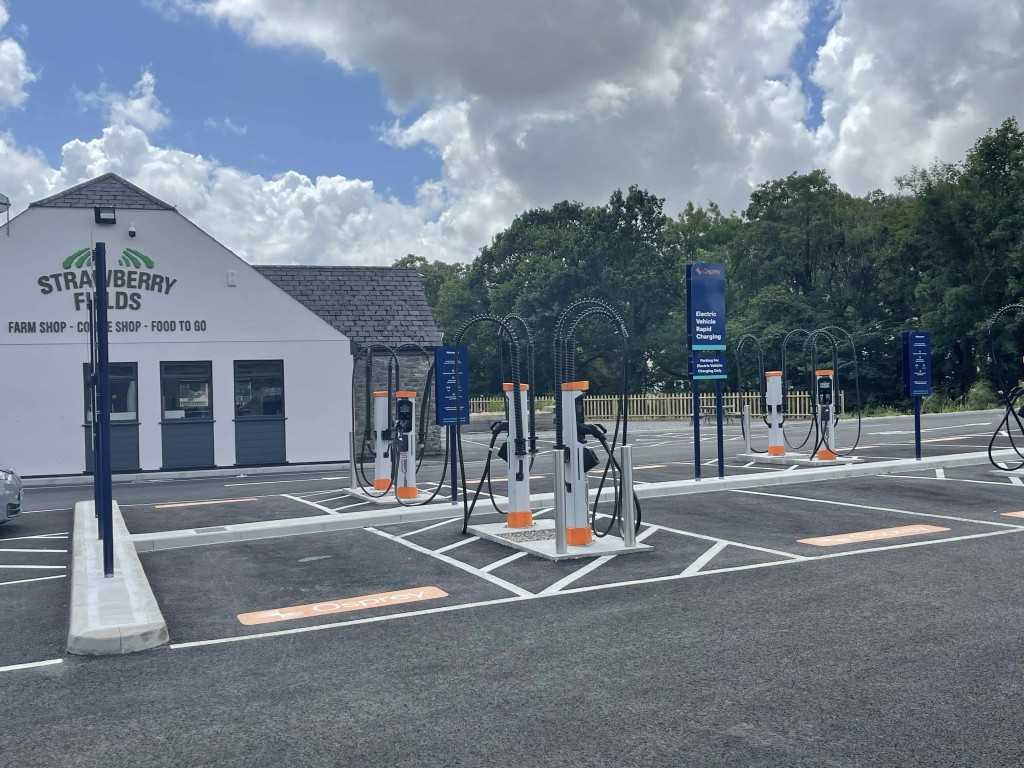
GRIDSERVE Electric Highway primarily offers public charging at service stations across Britain along the country’s motorway network.
A little further from the motorways, GRIDSERVE's electric forecourts – such as its flagship site at Braintree – are the first of their kind in the UK. Kitted out with 20 or more charging devices, they provide users with a familiar forecourt experience alonside all the benefits of carbon-free travel.
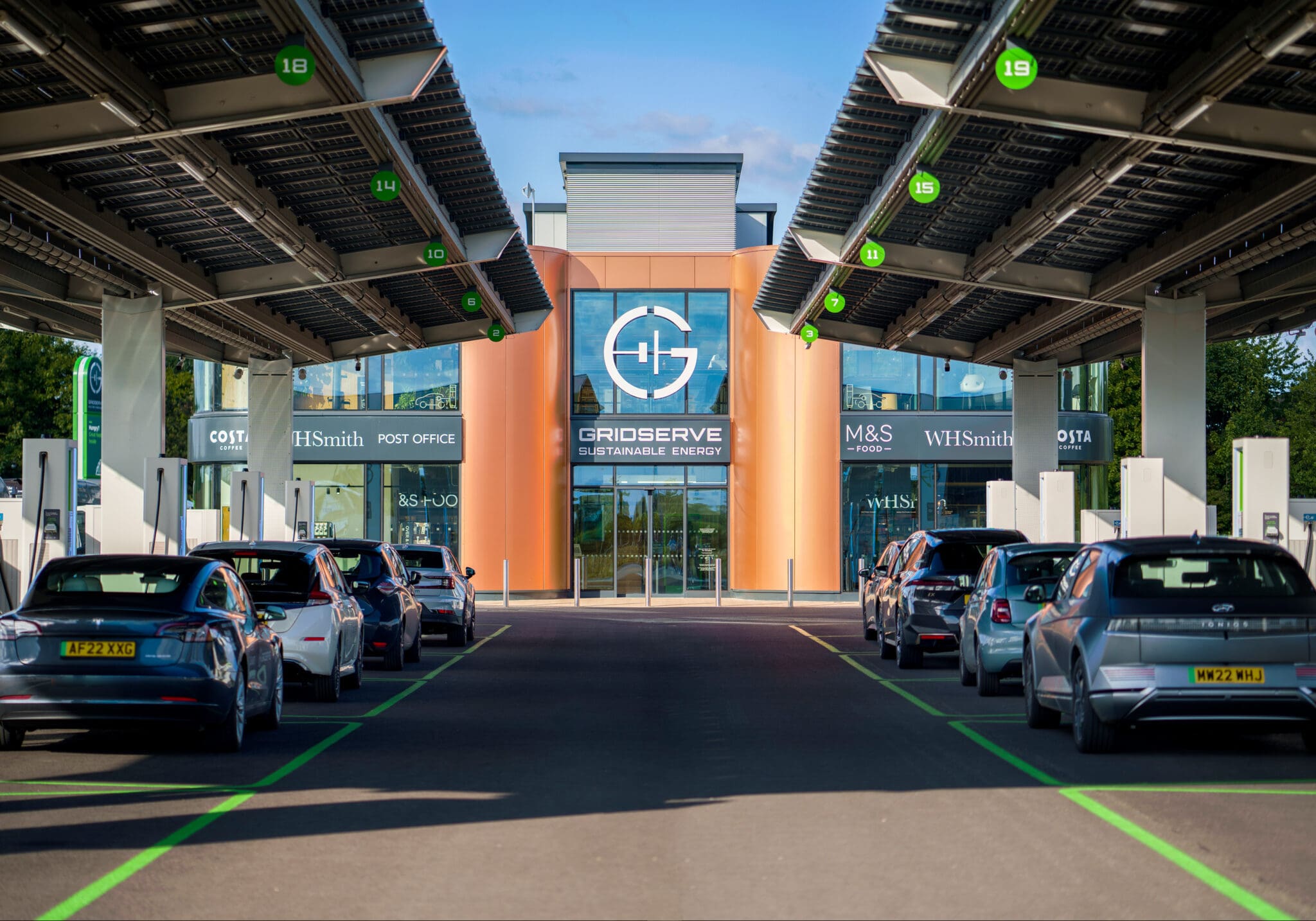
In many locations, Fastned hubs have distinctive yellow canopies for weather protection. They also provide lighting for easy use and safety.
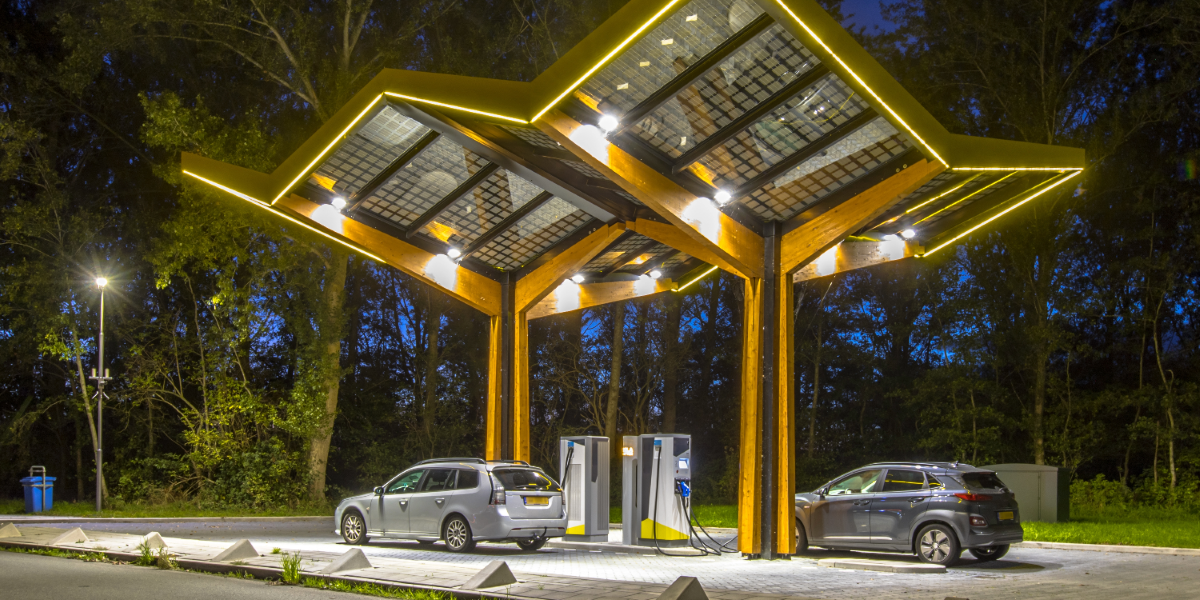
Many charge points provide two connectors per unit, occupying space between two parking bays, enabling two cars to charge simultaneously.
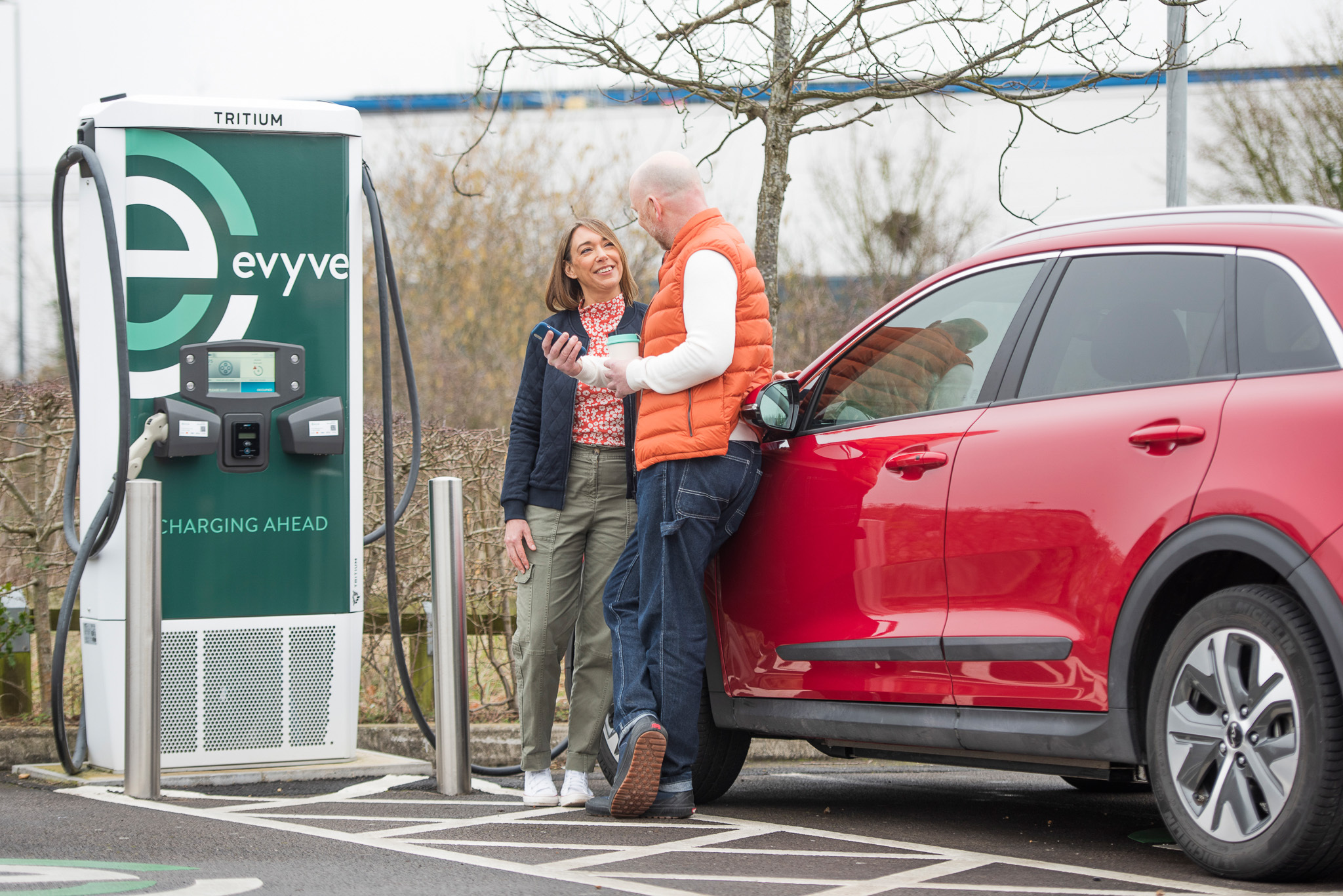
How to find en-route charge points
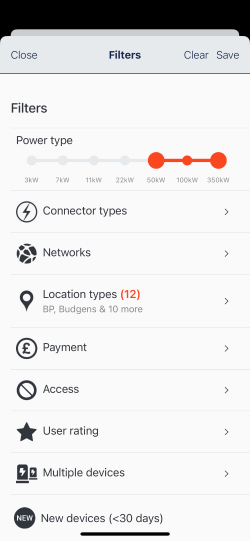
Wherever you are in the UK, you can locate charging points along your route quickly and easily with the Zapmap app and desktop map, both of which enable you to see the live availability status of more than 75% of these charge points, 24/7.
To find en-route charge points, there are a few handy filters in the app that can help in your search for chargers along your route.
First, you'll want to set the’ Power type’ slider to 50kW and above. This excludes charge points intended for long-stay or overnight charging.
You may also want to use the ‘Location types’ filter. This enables you to narrow your search to ‘Fuel forecourts’ and/or ‘Motorway services,’ where you are likely to find high-powered chargers.
You can also refine your search further by using the 'Multiple devices' filter available with Zapmap Premium. This filter allows you to search for a minimum number of charging devices in a given location. We recommend searching for groups of at least six devices, to help avoid any potential queues.
Finally, you can also plan your stops using the ‘Route’ option, or search nearby filtering for location and payment types, as well as network and access preferences.
How to pay for en-route charging
Fastned, MFG EV Power and Osprey are all en-route providers whose chargers are able to be paid for with the Zapmap app or Zapmap charging card, helping you to avoid the hassle of using multiple apps across different networks.
You just need to add the credit or debit card you wish to use into the 'Payment methods' section in ‘Settings.’ You can also use Apple Pay or Google Pay.
Select the charger you'd like to use within the app and start your charging session at the press of the Pay button. Or, just tap the Zapmap charging card on the contactless reader on the device itself (compatible networks are visible in the app - look out for the Zapmap charging card icon). Order a charging card by selecting 'Charging card' in the Payments settings
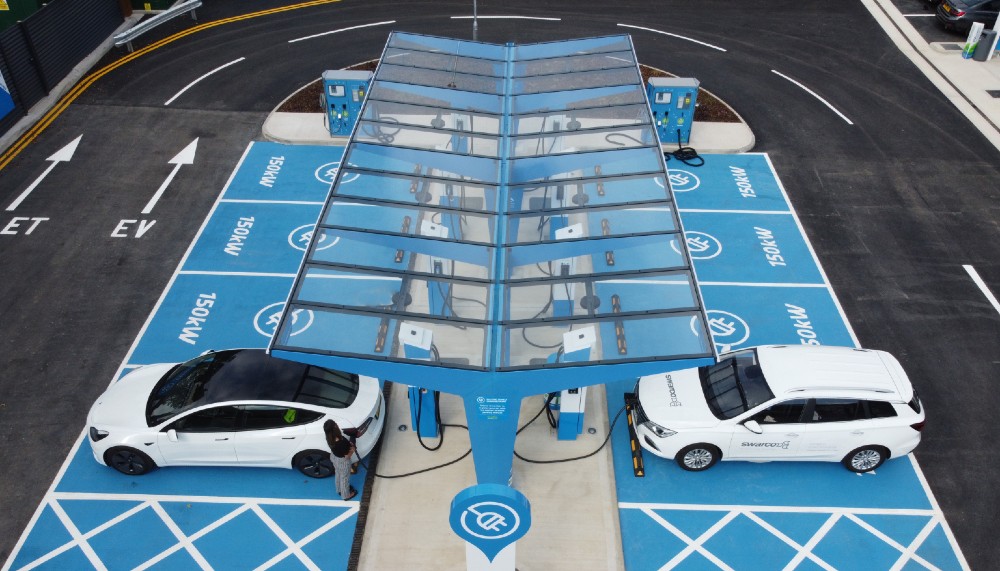
An MFG EV Power charging hub with a roof canopy.
You can check on the status of your charge at any time to see the estimated cost and the charge time remaining. VAT receipts for all charging sessions are also stored within the app, which you can access at any time to download to your device.
You can learn more about ways to pay in this handy guide on how to pay for public charging in the UK.
En-route charging étiquette
In general, it’s polite to move your vehicle from the charging bay once your charging session has finished so that other drivers can access it, especially if they are waiting to charge.
Overstay charges can also apply at many charge points, so it’s important to keep an eye on your charging progress and return to your car before your charge session ends. Overstay charges vary, some charge per minute, some per hour, in some cases the fine can be as much as £80 per hour.
We recommend that Zapmap users pay for charging via the Zapmap, so you can check on the status of your charge at any time in the Zapmap app.
How many high-power chargers are there in the UK?
Although many more will need to be rolled out over the coming years, high-powered chargers for longer electric journeys are becoming increasingly prevalent.
Indeed, the year-on-year growth of the speediest ultra-rapid chargers is the highest of any type of charger. You can learn more about how many charging points there are in the UK in our statistics hub.
